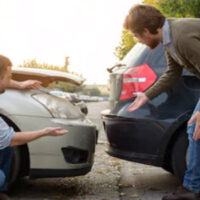Proving Fault in a Car Accident

Although Florida is a no-fault insurance state, it is possible for car accident victims to recover compensation for their losses when an insurance policy will not cover all of their related expenses. However, proving that someone else’s negligence caused a car accident can be a complex process, so if you were recently injured in a car crash and have questions about your own legal options, it is important to speak with an experienced Fort Lauderdale auto accident attorney who can advise you.
Physical Evidence
Proving fault in a car accident case comes down to clearly demonstrating that an at-fault driver failed to act in a reasonable or responsible manner. This could mean that a driver disobeyed a traffic law or that he or she failed to pay attention to the road and his or her surroundings. When this type of conduct causes an accident, the at-fault party can be held liable for damages, but only if the injured parties can provide physical evidence of fault, such as:
- Photos from the scene of the accident, showing property damage, skid marks, and damage to the vehicles;
- Cell phone records; and
- Mechanic reports.
Videos from the scene of the accident, including footage from security or traffic cameras can also play a critical role in proving who was at fault for an accident. Recordings from dashboard cameras and cell phones can also be used to help demonstrate fault for a collision.
Witness Statements
While physical evidence is often the most convincing component of a plaintiff’s case, it is by no means the only type of evidence. For instance, testimony from witnesses who saw an accident occur can be used to clarify points of contention and important accident-related details. Even if a person didn’t actually see the accident take place he or she might be able to provide some insight into the moments leading up to the collision, such as whether one of the drivers was speeding. To ensure that plaintiffs have access to these statements, injured parties should be sure to collect the names and contact information of any witnesses at the scene of the accident.
Traffic Law Violations
In most cases, accidents occur because one of the drivers involved violated a traffic law. Following too close, for instance, could result in a rear-end accident, while failing to yield can cause a collision in an intersection. Fortunately, these violations and subsequent citations are usually included by the law enforcement officers who created the accident report following the collision.
Accident Reconstruction
If, after a perusal of the relevant evidence, there is still a question of fault, parties to a car accident could benefit from an accident reconstruction, which are diagrams created by experts who use physical evidence and physics to reconstruct how an accident occurred. While not always 100 percent reliable, these reports could play a crucial role in demonstrating fault to a jury.
Contact an Experienced Car Accident Lawyer for Help with Your Case
Please call 954-566-9919 today to speak with one of the experienced car accident attorneys at Boone & Davis about collecting evidence for your own car accident claim.
Resource:
scholarlycommons.law.northwestern.edu/cgi/viewcontent.cgi?article=4577&context=jclc
https://www.booneanddavislaw.com/the-dangers-of-drowsy-driving-2/
